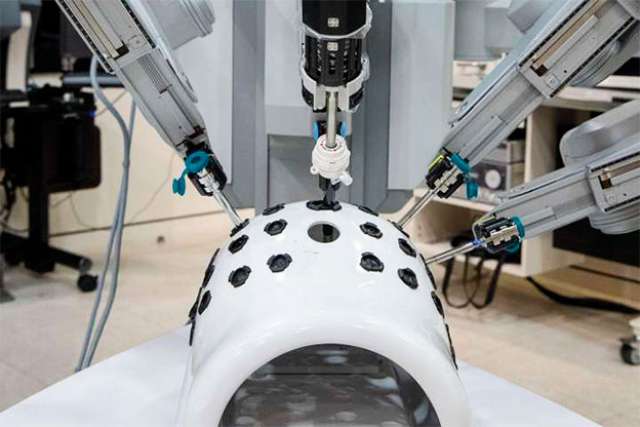For hundreds of thousands of people in the U.S. with end-stage renal disease who require regular kidney dialysis treatments to stay alive, transplantation can be transformative — both from the standpoint of expected lifespan and quality of life. But for individuals whose body mass index (BMI) is in the 35-to-45 range, the life-changing surgery is often considered too high-risk.
With the introduction of robotic kidney transplantation at UCLA Health last year, patients whose obesity would have previously put them on “hold” status may now be potential candidates. “Getting a new kidney can make a huge difference in the lives of people whose kidney failure forces them to undergo regular dialysis treatments,” says renal transplant surgeon Nima Nassiri, MD, who performed the first robotic kidney transplant in Westwood last July. “Providing this opportunity for patients who would otherwise be on hold represents a significant advancement.”
The UCLA Kidney Transplant Program is one of the highest-volume programs of its kind in the world, having performed more than 8,000 transplants.
The major challenge in transplanting patients with a high BMI is the risk associated with surgically accessing the blood vessels in the abdomen. “Having a larger space to get through increases the risk of wound infections, which can lead to long-term complications for patients who are on immunosuppression, and in most cases also have diabetes, setting them up for infections,” Dr. Nassiri says.
Robotic surgery has become common for urologic procedures over the last 25 years, most notably for patients undergoing radical prostatectomy to treat prostate cancer. Robotic kidney transplantation is a minimally invasive procedure in which the surgeon controls robotic arms from a console, allowing for greater manual dexterity through a smaller incision. “The improved visualization in a deep abdomen for patients with high BMI is a significant advantage,” Dr. Nassiri explains. “In addition, the incisions are much smaller, and in locations less prone to infections. Robotic kidney transplantation has also been shown to have lower analgesic requirements, shorter hospital stays and faster recovery.”
The UCLA Kidney Transplant Program is one of the highest-volume programs of its kind in the world, having performed more than 8,000 transplants. While the program is evaluating patients with BMIs as high as 45, not everyone is eligible. For example, patients with significant vascular disease are still viewed as too high-risk to undergo transplantation.
Making individuals with high BMI eligible for the robotic transplant procedure has led to several patients being activated from the transplant waiting list. Previously, these patients would have been excluded until they lost weight. “The problem is that it’s incredibly hard for any obese person to lose weight, especially when they’re on dialysis,” Dr. Nassiri says. “In my experience, these patients are already dieting and exercising as best they can.”
Dr. Nassiri notes that for people older than 50 who are on dialysis and have diabetes — the majority of patients who could benefit from kidney transplantation — the five-year survival rate is just 50%. “Kidney transplantation significantly improves both survival and quality of life, irrespective of the patient’s BMI,” Dr. Nassiri says. “Getting these patients off of the waitlist is our top priority, and we are doing that by offering this kind of tailored approach.”
For more information about the UCLA Health Kidney Transplant Program.




